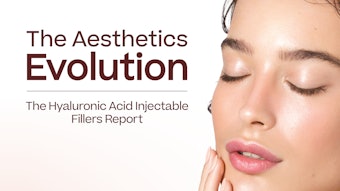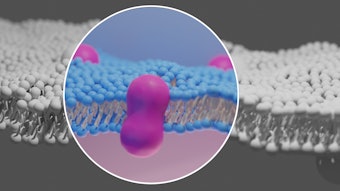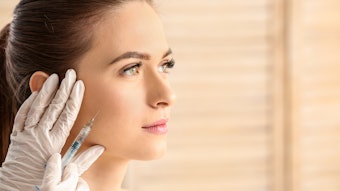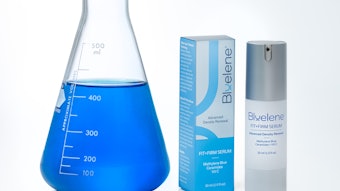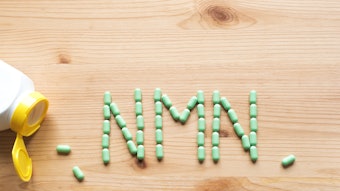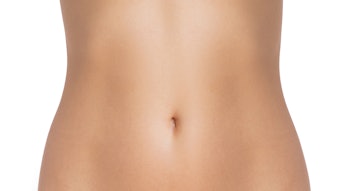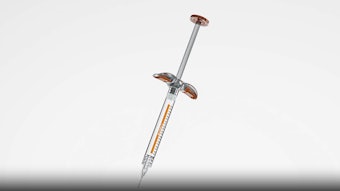
Over one-third of women going through perimenopause or menopause face sexual difficulties, including low libido and difficulty achieving orgasm [1]. Despite this, research on women’s sexual wellness remains significantly underfunded compared to men’s. Progress, however, is being made.
Vaginal wellness brands and dermatologists are stepping up with research and treatments aimed at addressing these issues, helping to normalize conversations around women’s health. As women age and experience collagen depletion, these efforts are paving the way for improved sexual wellness and overall well-being.
There is five times more research into erectile dysfunction, which affects 19% of men, than into premenstrual syndrome, which affects 90% of women [2].
“Just like our skin, the vaginal tissue goes through changes as we age, mainly from collagen loss and hormonal shifts as estrogen decreases due to menopause, childbirth or other factors,” says dermatologist Alexandra Bowles, D.O. “Treatments for vaginal rejuvenation help stimulate collagen production, similar to how we treat aging skin, to restore hydration, firmness and overall function.”
Aesthetic Treatments for Vaginal Rejuvenation and Function
Laser Therapy
Dermatologists now offer laser therapy and PRP regenerative treatments to address vaginal concerns like dryness, laxity and discomfort. Bowles said these treatments focus on appearance but also on overall health and comfort, making it a “natural extension” of dermatology.
Femtouch CO2 laser therapy is one mechanism dermatologists like Bowles use to target the deeper layers of vaginal tissue with precise energy, stimulating collagen and elastin production. Unlike other methods that may just treat the surface, this minimally invasive therapy works beneath the surface to help the tissue regenerate and regain its firmness and elasticity for vaginal function.
 Alexandra Bowles using the FemTouch laser.Courtesy of Alexandra Bowles
Alexandra Bowles using the FemTouch laser.Courtesy of Alexandra Bowles
Younger patients or those with mild collagen depletion may see faster results with the Femtouch laser, while those who’ve experienced more significant hormonal changes—like postmenopausal women—may take a little longer to see the full benefits, Bowles says.
“The process might be a bit slower because collagen production can be less responsive as we age or undergo hormonal shifts; however, most people do experience improvements in moisture, tightness and overall comfort within a few months of treatment,” Bowles says.
Bowles recommends vaginal rest for five days minimum following the treatment to allow the area to heal.
Platelet-Rich Plasma (PRP)
Another method for vaginal collagen production is PRP, or platelet-rich plasma, which uses the body’s own growth factors to stimulate healing. It’s particularly helpful for treating vaginal dryness, laxity and irritation, and works alongside laser treatments, Bowles says.
Compared to other treatments like creams or hormonal therapies that sometimes offer temporary relief, PRP helps restore natural function by boosting collagen and circulation. It’s an alternative for those who want to avoid hormones, but still experience significant improvements in dryness, elasticity and comfort, Bowles adds.
“When combined, laser therapy jump-starts collagen production, and PRP accelerates healing and boosts moisture, creating synergistic effects that make the results more effective and long-lasting,” Bowles says.
Both PRP and Femtouch are generally low-risk procedures, with possible temporary redness, mild discomfort or mild swelling afterward, Bowles says. It’s important to avoid heavy exercise and sexual activity for a short time after the procedure, with a detailed consultation to understand the best treatment plan for individual needs and goals, she adds.
Bowles says laser and PRP are great for patients with any concerns regarding vaginal rejuvenation, but she recommends starting with laser therapy, as it is low downtime and not painful. The best treatment plan, however, is determined after an in-depth discussion of the patient’s concerns and expectations, she adds.
Topical Products Using Science-Backed Technology
Some women may not be able to engage in vaginal rejuvenation treatments.
 Vella Bioscience’s Women’s Pleasure SerumCourtesy of Vella Bioscience
Vella Bioscience’s Women’s Pleasure SerumCourtesy of Vella Bioscience
“When people talk about ‘female Viagra’ they are also almost always talking about something to enhance our libido,” Wheeler says. “But this isn’t what Viagra does for a man? Why, when we transfer that conversation to a woman’s body, do we make it about our brains?”
She adds that solving issues of female sexual arousal and orgasm has been vastly ignored by investors, government agencies, and in turn, scientific and medical research. Vella products are designed to address a range of issues that women face in sexual health, from arousal difficulties and intimacy challenges to overall sexual comfort.
The Pleasure Serum is a water-based topical lotion. Its technology encapsulates cannabidiol (CBD) in liposomes to effectively deliver a high-payload of CBD to the site of action for maximum bioavailability, Wheeler says.
One of CBD’s key benefits, Bowles says, is its ability to interact with the body’s endocannabinoid system, which plays a role in regulating pain, inflammation and circulation. By promoting better blood flow and reducing sensitivity, CBD can help ease discomfort, while also supporting hydration and soothing irritation for comfortable arousal.
The serum is applied to the clitoris 15-20 minutes prior to sexual activity.
“The reason why liposomes are required in the formulation is because CBD is a fatty molecule and our bodies are made of water,” she adds. “Super simply put, oil and water don’t mix, [and] oil-based formulations with CBD aren’t able to deliver the amount of CBD that is required to relax smooth muscle, and can’t move far past the dermis.”
Bowles says that, although CBD does not stimulate collagen production like laser therapy or PRP, it can work well alongside these treatments by enhancing overall comfort and tissue relaxation. For patients looking for a natural approach to vaginal wellness, CBD can be a valuable addition to their routine, she adds.
In addition, Vella has designed lubricants, including Super Slip and Slide and the Intimate Elixir, providing supreme hydration and moisturization through hyaluronic acid, squalane and sea buckthorn oil, to reduce friction and increase pleasure, Wheeler says.
“These products are backed by both pre-clinical and clinical research, and serve to empower women in their sexual health journey and to claim their right to pleasure,” she adds.
The Importance of Vaginal Wellness Research and Rejuvenative Solutions for Women
Wheeler says, the more words we have to describe our bodies, the better they will be taken care of, fueling her mission to find solutions that women are missing due to lack of research.
“Vella provides women with not only the products they need to live more fulfilling lives, but also the information they deserve to better understand their bodies,” she adds.
What excites Wheeler the most about the development of research and solutions for women’s wellness is AI’s capability of mapping the vulva and diagnosing vulvar conditions.
“Doctors, including OB/GYNs, are not even taught in medical training about how to talk to patients about their sexual health,” Wheeler says. “The challenge is immense, but the opportunity is even more immense.”
To garner more conversation on women’s sexual wellness, Vella is partnering with organizations and non-profits that support female sexual empowerment and research in the effort to normalize these conversations in the media, in homes and in clinics.
“We are still in the early stages of uncovering the full scope of what female sexual wellness means, [with] so many aspects still largely misinformed and understudied, such as vulvodynia, vestibulitis and hormone replacement therapy,” Wheeler says. “While men’s sexual health has been well-researched for decades, women’s health issues—like sexual arousal, pain during intercourse and hormonal changes—have only recently begun to receive the attention they deserve.”
References:

